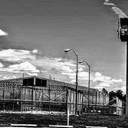The FBI’s recently released Uniform Crime Reports: Crime in the United States, 2006, revealed that the murder rate in 2006 rose slightly from 5.6 murders per 100,000 people in 2005 to 5.7 in 2006, but was at the same rate as in 1999 when use of the death penalty started to show marked declines. There has been little change in the murder rate in the intervening years when death sentences, executions, and the size of death row all declined.
As in previous years, the South had the highest murder rate in 2006 (6.8 per 100,000 people) among the four geographical regions. This represents a 3% increase from 2005 and was the largest increase among the four regions. Over 80% of the executions in the country have occurred in the South since the death penalty was reinstated. The Northeast had the lowest murder rate, 4.5 per 100,000 people. Less than 1% of the executions in the country have occurred in the Northeast. Louisiana had the highest murder rate (12.4) and New Hampshire had the lowest (1.0).
(Press Release and Report, Crime in the United States 2006, U.S. Dept. of Justice, September 2007, with death penalty notes from DPIC). See Deterrence (with a breakdown of murder rates by state and by year) and Studies.



